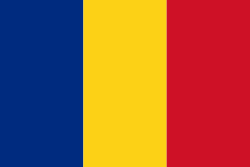Goals of physiotherapy
Kinesiotherapy is a way of rehabilitation of the musculoskeletal system, in more simplistic language we can also call it movement therapy. In contrast to other therapeutic and preventive methods, kinesiotherapy uses man and body movement in the form of well-defined exercises as its main resource. Therefore, the presence of a specialist supervising the exercises is mandatory.
Physical therapy is tailored to each individual patient and the treatment plan is designed by the physical therapist according to the particular needs and characteristics of the patient. The specialist will adapt the exercise according to the different phases of the patient's recovery, which will influence the frequency and number of repetitions, the position of the movement, the speed of movement, the weight, the breathing pattern, etc.
All these techniques speed up recovery, their aim being to restore independence to patients as soon and for as long as possible. They are also useful for people who want to prevent, not just treat (prophylactic).
The main objectives of physiotherapy are:
- increased strength and endurance
- improving coordination and balance
- increased effort capacity
- improved joint mobility
- cardio-respiratory fitness
- correcting and maintaining posture
All this contributes to achieving and maintaining an active lifestyle.
Objectives of pediatric physiotherapy
- head position control
- static and dynamic balance education
- improving posture
- harmonious physical development
- developing coordination
- respiratory retraining
- improved joint mobility
- normalizing muscle tone
Types of physiotherapy
Prophylactic physiotherapy
Prophylactic or preventive physiotherapy aims to maintain optimal health, prevent certain conditions, prevent complications and sequelae or stop the chronic onset of certain severe conditions. All this is achieved through physical exercise combined with medical massage sessions.
Therefore, even healthy people can use the services of a physiotherapist, as prophylactic physiotherapy will significantly reduce the risk of injury and shorten the recovery period in cases where an injury does occur.
Recovery physiotherapy
It involves restoring the body's impaired functions resulting from trauma or illness through a set of exercises specific to rehabilitation gymnastics.
Often, prophylactic physiotherapy and rehabilitative physiotherapy are interleaved, resulting in another form of physiotherapy, namely curative physiotherapy.
Curative physiotherapy
As mentioned before, curative physiotherapy is a combination of prophylactic and rehabilitative physiotherapy. It therefore works both on restoring function and on maintaining health or stopping the chronicity of a particular disease, depending on the patient's symptoms.
Pediatric physical therapy
Pediatric physiotherapy is specifically designed to improve children's motor skills from the first days of life until the age of 18. They are constantly adapted to the diagnosis and needs of each individual child. Pediatric physiotherapy helps to combat pain, re-educate posture, re-educate gait, improve balance and coordination, improve breathing, recovery and avoid possible complications.
When is physiotherapy needed
Physical therapy may be necessary and recommended whenever a movement problem limits your daily activities. In many conditions, physiotherapy is recommended as the sole treatment, which proves its usefulness and beneficial effects.
Post-traumatic or post-operative recovery
Kinetotherapy is very useful in post-traumatic or post-operative cases, where certain functions are severely impaired, helping to restore them in the medical recovery process.
Kinetotherapy is also increasingly used to improve mobility in various neurological conditions such as Parkinson's disease or muscular dystrophies (muscular atrophy or hypotrophy) and to relieve functional deficits in certain chronic diseases.
Sports rehabilitation
One of the most common uses of physiotherapy is sports recovery. After a sports injury, physiotherapy helps both to recover faster and to prevent future injuries, which is vital for young athletes.
Rheumatologic diseases
Kinetotherapy helps reduce pain associated with certain rheumatologic conditions, such as:
- rheumatoid arthritis
- gonarthrosis
- osteoporosis
- coxarthrosis.
The benefits of physiotherapy
Motor Function Recovery and Rehabilitation
Kinetotherapy is essential in the recovery of motor functions after accidents, surgery or conditions that affect mobility. Through specific and personalized exercises, patients can regain strength, coordination and flexibility of muscles and joints. It helps restore mobility and functional independence, allowing patients to return to daily activities and improve their quality of life.
Pain relief
Physiotherapeutic exercise can help relieve chronic pain by improving blood circulation, reducing inflammation and releasing endorphins, which are the body's natural painkillers. It allows patients to reduce their dependence on painkiller medication and manage pain in a more natural and healthy way.
Chronic Disease Prevention and Management
Physiotherapy is used to prevent and manage chronic conditions such as arthritis, diabetes, hypertension and cardiovascular disease. Regular exercise can help maintain a healthy weight, improve metabolism and cardiovascular health. It helps reduce the risk of complications associated with chronic conditions and improves patients' overall health and well-being.
Improving Balance and Coordination
Through specific exercise programs, physiotherapy can help improve balance and coordination, which are essential for preventing falls, especially among older people. It reduces the risk of accidents and injuries, giving patients more confidence and autonomy in their daily movements.
Sports Rehabilitation and Physical Performance Enhancement
Physiotherapy plays a crucial role in rehabilitating athletes after injuries and improving physical performance. Through advanced techniques and personalized exercises, athletes can recover faster and more effectively. It helps reduce recovery time, prevents injury recurrence and improves overall physical performance.
Contraindications of physiotherapy
Kinetotherapy, although beneficial for many conditions, can also have contraindications in certain situations. It is important that before starting a physiotherapy program, patients should be consulted and evaluated by a physiotherapy specialist.
Acute Inflammation or Infection
In cases of acute inflammation or infection, exercise can aggravate the condition and spread the infection. For example: severe skin infections, systemic infections or severe joint inflammation (such as in acute rheumatoid arthritis).
Recent Acute Injuries or Fractures
In acute injuries or recent fractures, exercise can aggravate the injury and delay healing. Example: non-union fractures, severe sprains or muscle tears.
Unstable Cardiovascular Disease
Patients with unstable or severe cardiovascular disease should avoid physiotherapy until their condition stabilizes, as exercise can put extra strain on the heart and circulatory system. Example: decompensated heart failure, unstable angina, recent myocardial infarction.
Severe Respiratory Problems
In severe respiratory conditions, exercise can worsen symptoms and lead to shortness of breath. Example: uncontrolled bronchial asthma, severe chronic obstructive pulmonary disease (COPD).
Unstable Neurological Conditions
Patients with unstable or progressive neurological conditions may be contraindicated for physiotherapy, as exercise may worsen the neurological condition.
Example: uncontrolled epilepsy, acute multiple sclerosis.
Severe Orthopedic Problems
In the case of severe orthopedic problems, physiotherapy may be contraindicated or require specific adaptations to avoid worsening the condition. Example: severe scoliosis, major bone deformities.
The team supporting you
We always make sure that all details have been taken into account and take the time to answer any questions about the diagnosis or recommended treatment procedures. A good understanding of all necessary steps in the therapeutic approach is essential for successful treatment.
Each of us, and together, we work to provide a pleasant experience for every patient. We are a team full of enthusiasm and energy, specializing in treatments for adults and children.
Empathy motivates us to become the right support in a complex therapeutic process, carefully designed and tailored to the patient's needs.









